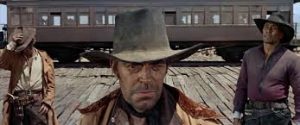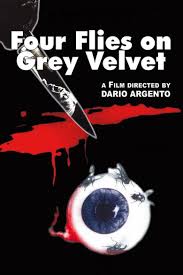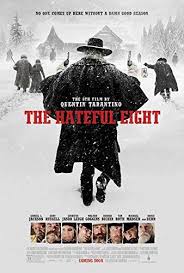
© The Turman-Foster Company / Universal Pictures
I reckon John Carpenter’s 1982 movie The Thing is one of the best horror films ever. Its story of a shape-shifting alien organism that infiltrates a base in Antarctica, absorbing and assuming the forms of more and more of the base’s human (and canine) personnel, is a masterpiece of claustrophobia, paranoia and all-round scariness.
And its special effects, courtesy of make-up / effects genius Rob Bottin, massively raised the bar for what was achievable in horror movies at the time. During those moments when it reveals itself, Bottin’s alien Thing is a hellish, glistening, squirming, tentacled nightmare made of bits and pieces of all the Earth creatures it’s consumed already. It resembles a canvas painted and splattered simultaneously by Hieronymus Bosch and Jackson Pollock.
What makes Bottin’s work all the more remarkable, and believable, is that it consists of real, solid, practical effects. For The Thing was made in the days was before digital technology took over and filmmakers went crazy using cartoonish and insubstantial-looking computer-generated imagery. That’s the reason why I’ve never bothered watching Matthijs van Heijningen Jr’s 2011 prequel to Carpenter’s movie, also called The Thing. Although practical special effects were used during the prequel’s shooting, studio executives later lost their nerve, decided 2011 audiences couldn’t handle an absence of CGI and had the wretched stuff superimposed over those practical effects in post-production.
Anyway, today – June 25th – is exactly 40 years since Carpenter’s The Thing was first released in cinemas. Which, as well as making me feel bloody ancient, makes we want to post something about it on this blog. But rather than write about the movie itself, as countless film critics, commentators and enthusiasts have over the years, I thought I’d look instead at its literary roots. Because The Thing is an adaptation (scripted by Bill Lancaster, son of Burt) of a novella called Who Goes There?, written by science-fiction writer and editor John W. Campbell and published in 1938.
Who Goes There? had already been filmed in 1951 as The Thing from Another World, directed by Christian Nyby and produced by the legendary Howard Hawks. The 1951 version keeps the story’s basic premise of the crew of a polar camp coming up against a malevolent alien. But instead of depicting it as a shape-shifting beastie, which would have been difficult to do convincingly in 1951, the Hawks / Nyby film merely depicts it as a lumbering, pasty-skinned, dome-headed muscle-man played by none other than James Arness, later to star in the 1950s-1970s Western TV show Gunsmoke. Howard Hawks’s trademark no-nonsense directorial style and brisk, punchy dialogue are much in evidence in The Thing from Another World and it’s often been speculated that he, rather than Nyby, shot much of the film.

© Winchester Pictures Corporation / RKO
John Carpenter was well-known for his admiration of Howard Hawks and his 1976 movie Assault on Precinct 13 in particular shows a big Hawksian influence. So, when Carpenter’s version of The Thing was announced, I suspect many critics assumed it’d be a straightforward remake of the 1951 movie. And I suspect that’s why it got such a hostile reception when it was released in 1982. For although the movie has since been reappraised and is now regarded as a sci-fi / horror classic, it initially earned Carpenter some of the worst reviews of his career. I seem to remember, for instance, the Observer slamming it under the headline JUST ONE DAMNED THING AFTER ANOTHER. Those 1982 critics got something very different from what they were expecting and didn’t react well.
What they got, in fact, was a film capturing the shape-shifting concept of the alien in the real source material, the 1938 story by John W. Campbell – a story most of those critics were probably unfamiliar with.
I recently came across and read Who Goes There? online. What did I think of it?
Well, what I immediately thought after reading it was “Phew!” Experienced in 2022, with its dollops of torturous pose and pages upon pages of dialogue-framed exposition, Campbell’s story is hard going indeed.
It’s fun to see so many character-names that crop up in Carpenter’s film – McReady (in the film spelt ‘MacReady’), Blair, Copper, Garry, Norris, Clark, Benning – but the descriptions of those characters are madly overwrought. The hero McReady is likened by Campbell to “a figure from some forgotten myth, a looming, bronze statue that held life, and walked. Six-feet-four inches he stood… And he was bronze – his great red-bronze beard, the heavy hair that matched it. The gnarled, corded hands gripping, relaxing on the table planks were bronze. Even the deep-sunken eyes beneath the heavy brows were bronze.” This Wagnerian, and bronze, version of McReady is far removed from the morose, tetchy git played in the film by Kurt Russell.
The scientist Blair, meanwhile, is described with this peculiar sentence: “His little birdlike motions of suppressed eagerness danced his shadow across the fringe of dingy grey underwear hanging from the low ceiling, the equatorial quiff of stiff, greying hair around his naked skull a comical halo about the shadow’s head.” At least he sounds more like his cinematic incarnation, who’s played by the character actor Wilfred Brimley.

© Barnes & Noble
How the characters discover and bring into their camp their soon-to-be-unwelcome visitor is related in three pages of conversational backstory, which includes such unlikely pieces of dialogue as: “Right there, where that buried thing was, there is an ice-drowned mountain ridge, a granite wall of unshakable strength that has dammed back the ice creeping from the south.” Later, as the Thing starts to imitate the base’s inhabitants, there are many talky pages where people speculate on its biology, its capabilities and how it can be detected; and also, where they start to crack up with paranoia. “You sit as still as a bunch of graven images,” exclaims one man while his colleagues regard him suspiciously. “You don’t say a word, but oh Lord, what expressive eyes you’ve got. They roll around like a bunch of glass marbles spilling down a table. They wink and blink and stare and whisper things.”
There are moments when Campbell’s prose conveys the bleakness of the situation, recording how the Antarctic wind created an “uneasy, malicious gurgling in the pipe of the galley stove” and how “the snow picked up by the mumbling wind fled in level, blinding lines across the face of the buried camp”. But overall, thanks to its dire writing, Who Goes There? is a work to be endured rather than enjoyed. It isn’t a patch on that other famous 1930s tale of Antarctica-set horror, H.P. Lovecraft’s At the Mountains of Madness (1936).
Still, the story provides the film with its most celebrated scene, the ‘blood-test’ one wherein McReady hits on a method of identifying who’s-been-got and who’s not. However, while John W. Campbell has McReady laboriously testing the blood of some 35 base-members, in the movie John Carpenter waits until there’s only half-a-dozen men left standing, which makes his enactment of the scene much more intense, focused and suspenseful.
And to be fair to Campbell, his story clarifies the Thing’s modus operandi. At times the film is hazy about just what the humans are up against. For example, watching The Thing, I was initially puzzled by the idea that the intruder could take the form of more than one victim at a time. In the story, it’s made clear that when it absorbs an organism it adds the organism’s body mass to its own; and when the organism is replaced, that hives off again with the original’s mass. Meanwhile, the original Thing goes back to its original bulk too, free to absorb and replicate something else.
Then there’s the sub-plot with Blair. In both the novella and film, Blair loses his mind as the horror unfolds and is locked up for his own and everyone else’s safety. It later becomes apparent that he’s part of the Thing too, has its alien intelligence, and has spent his time in captivity assembling a mysterious machine. The novella describes how he’s imprisoned in an equipment storeroom, where he uses pieces of the equipment to fashion a small anti-gravity device that’ll transport him from Antarctica to a populated continent where he can start replicating. The film is murkier about what he’s up to. We get a glimpse of some sort of capsule, like a mini-flying saucer, but there’s little explanation why and nothing about his place of incarceration being an equipment storeroom. I was left with the impression that Blair for some reason had managed to construct a spacecraft out of empty soup cans and pieces of string.
Finally, I should point out that Who Goes There? isn’t the only literary work connected with the scary world of The Thing. In 2010, Clarkesworld Magazine published a short story called The Things, written by Peter Watts, which retells the events of Carpenter’s movie through the eyes, if that’s the word, of the Thing itself.
Here, the Thing isn’t such a bad old thing. It genuinely believes it’s doing the humans a favour by taking them over, which it describes as an act of ‘communion’. It views their biology as ‘ill-adapted’, ‘inefficient’ and ‘disabled’ and wants to ‘fix’ them. At times, it’s repulsed by their physical circumstances, calling their brains ‘tumours’ and their bodies ‘bony caverns’. No wonder it’s upset when the humans respond to its kindness by using flamethrowers on it.
A thought-provoking and bleakly-amusing take on John Carpenter’s movie from the very last character in it you’d expect, Peter Watts’ The Things can be read on this webpage. Meanwhile, John W. Campbell’s Who Goes There? is available for reading here. The 2010 story is 7,000 words long while the 1938 one clocks in at a hefty 30,000 words. Comparing them, I have to say I agree with the old adage that the best Things come in small packages.

© Shasta Publishers







